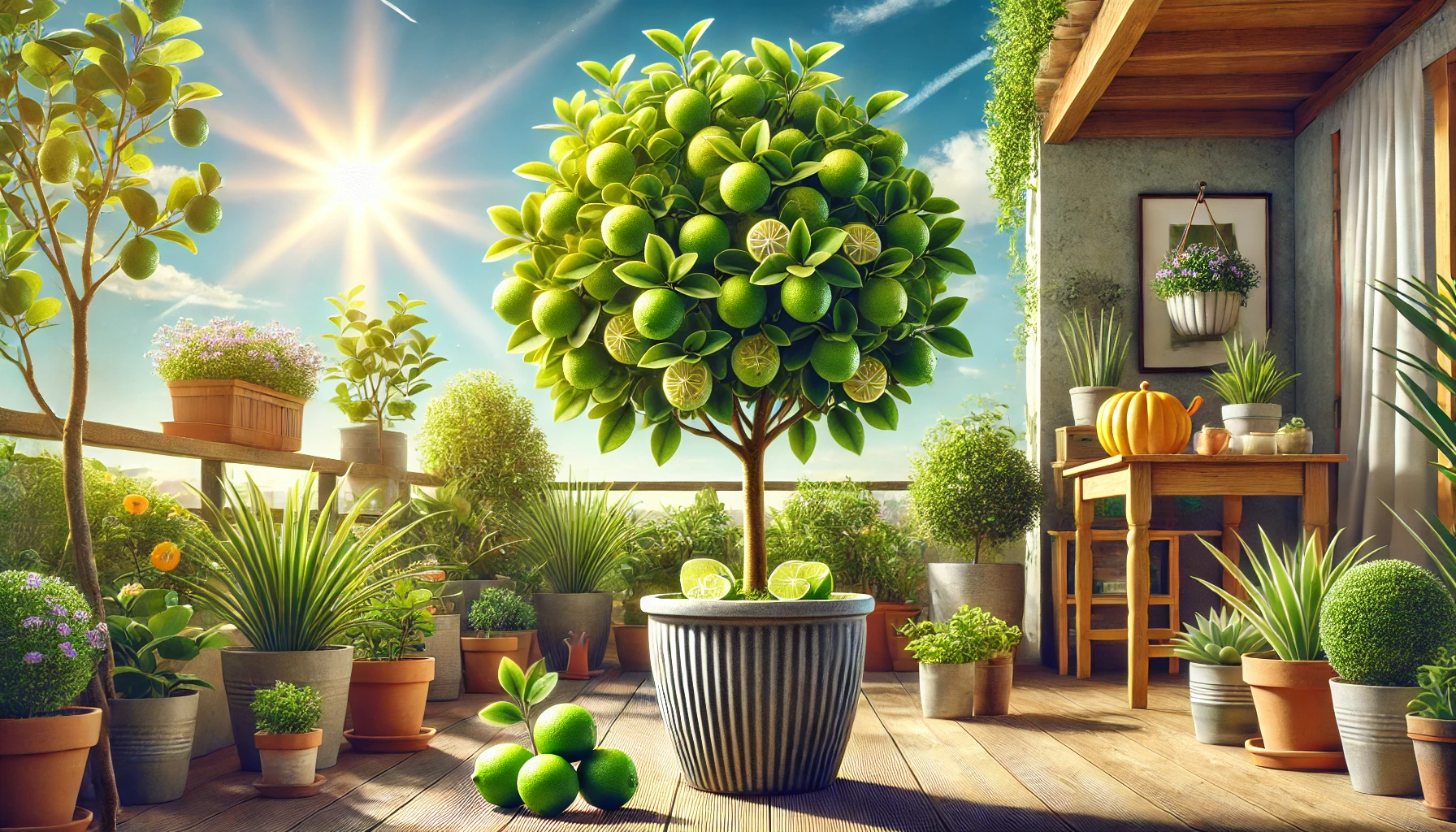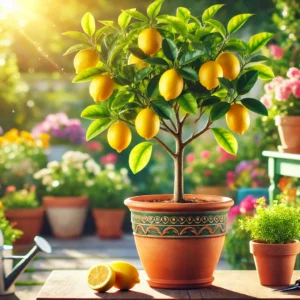Limes, with their tangy flavor and vibrant aroma, are a staple in kitchens worldwide. Originating from Southeast Asia, these citrus fruits thrive in warm climates and are beloved for their versatility in culinary uses. Growing limes in a pot is an excellent option for those with limited space or who live in colder climates, allowing them to enjoy fresh limes year-round. Here, we will guide you through every step of growing a lime tree in a pot, from choosing the right seed to harvesting your crop.
The Perfect Pot Size of Lime Plant
For growing lime trees, the ideal pot size is at least 18-24 inches in diameter and 20-24 inches deep. This size allows enough room for the root system to grow and ensures the tree has enough soil to retain moisture and nutrients.
Ideal Weather Conditions for Lime Trees
| Condition | Ideal Range |
|---|---|
| Temperature | 70-85°F (21-29°C) |
| Humidity | 50-70% |
| Sunlight | Full sun, at least 6-8 hours per day |
| Wind | Sheltered from strong winds |
| Rainfall | Moderate, well-drained soil |
Choosing and Preserving Lime Seeds
Choosing Seeds from the Shop:
- Select seeds from a reputable nursery or garden center.
- Ensure seeds are fresh and have not been treated with chemicals.
Collecting and Preserving Seeds:
- Choose a ripe lime fruit.
- Extract seeds and wash them to remove pulp.
- Soak seeds in water for 24 hours.
- Dry seeds on a paper towel for 2-3 days.
- Store seeds in a cool, dry place until ready to plant.
Growing a Seedling from Seed
- Soak the Seeds: Place seeds in warm water for 24 hours to soften the seed coat.
- Prepare the Pot: Fill a seed tray with a seed-starting mix.
- Plant the Seeds: Plant seeds 1/4 inch deep in the soil mix.
- Watering: Keep the soil consistently moist but not waterlogged.
- Light: Place the tray in a sunny location or under grow lights.
- Germination: Seeds typically germinate in 2-4 weeks.
- Transplanting: Once seedlings have 2-3 true leaves, they are ready for transplanting.
Nutritional Requirements for Lime Trees
| Nutrient | Requirement | Importance |
|---|---|---|
| Nitrogen (N) | High, regular feeding | Essential for leaf and stem growth |
| Phosphorus (P) | Moderate, especially during flowering | Promotes root development and flower health |
| Potassium (K) | High, especially during fruiting | Improves fruit quality and overall plant health |
| Calcium (Ca) | Moderate, avoid deficiencies | Prevents disorders like blossom end rot |
| Magnesium (Mg) | Regular, especially during growth | Key for photosynthesis |
| Iron (Fe) | Trace, prevent chlorosis | Necessary for chlorophyll formation |
Ideal Soil Mix for Lime Trees
| Ingredient | Amount | Ratio |
|---|---|---|
| Potting soil | 2 parts | 2 |
| Compost | 1 part | 1 |
| Perlite | 1 part | 1 |
| Sand | 1 part | 1 |
| Organic fertilizer | 1/2 cup per pot | – |
Making the Soil Mix:
- Combine potting soil, compost, perlite, and sand in the specified ratio.
- Mix thoroughly to ensure even distribution.
- Add organic fertilizer and mix again.
- Fill the pot with the soil mix, leaving about 1-2 inches from the top.
Pot Drainage System
- Ensure the pot has several drainage holes at the bottom.
- Place a layer of gravel or broken pottery shards at the bottom of the pot to improve drainage.
- Cover the drainage layer with a piece of landscape fabric to prevent soil from clogging the holes.
Transferring Seedlings to the Pot
- Preparation: Fill the pot with the prepared soil mix.
- Watering: Water the seedlings well before transplanting.
- Removing Seedlings: Gently remove seedlings from the tray, taking care not to damage roots.
- Planting: Make a hole in the center of the pot, place the seedling in, and cover roots with soil.
- Watering: Water the plant thoroughly to settle the soil around the roots.
- Placement: Place the pot in a sunny location.
Care for Different Growth Stages
1. Early Growth Stage:
- Watering: Keep soil moist but not waterlogged.
- Fertilizing: Apply a balanced liquid fertilizer every 2-4 weeks.
- Pruning: Remove any dead or damaged leaves.
2. Vegetative Stage:
- Watering: Ensure consistent moisture; water deeply when the top inch of soil is dry.
- Fertilizing: Use a high-nitrogen fertilizer every 4-6 weeks.
- Pruning: Thin out crowded branches to improve air circulation.
3. Flowering Stage:
- Watering: Maintain moisture, avoiding water stress.
- Fertilizing: Switch to a fertilizer high in phosphorus.
- Pruning: Remove weak or non-fruiting branches.
4. Fruiting Stage:
- Watering: Regular, deep watering; avoid water fluctuations.
- Fertilizing: Use a potassium-rich fertilizer.
- Pruning: Minimal pruning, focus on supporting fruiting branches.
Special Instructions for Pot Gardening
- Rotate the pot periodically to ensure even sunlight exposure.
- Monitor for pests and diseases, treating promptly if detected.
- Mulch the top of the soil to retain moisture and regulate temperature.
- Protect the plant from extreme weather conditions, such as frost or heatwaves.
Harvesting and Preserving Limes
Harvesting:
- Limes are ready to harvest when they are fully green and slightly soft to the touch.
- Twist the fruit gently from the branch or use pruning shears to cut it off.
Preserving:
- Store fresh limes in the refrigerator for up to 4 weeks.
- For longer storage, juice the limes and freeze the juice in ice cube trays.
- Alternatively, slice and dry limes in a dehydrator, then store in an airtight container.
By following these detailed guidelines, you can successfully grow a lime tree in a pot and enjoy fresh, home-grown limes throughout the year.



